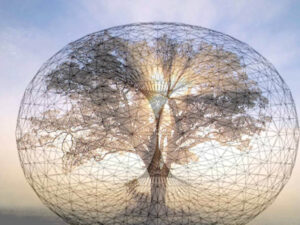With our modern world full of rampant consumerism, pollution, and the destruction of the environment happening at a dangerously rapid pace, it’s becoming painfully clear we need to start doing something different. I could go on and on all day listing the stuff that’s messed up with this planet right now, but this post isn’t meant to bring you down sooo… Let’s focus on the positives!
What we can do about these problems we face today? What are the solutions?
 That’s where permaculture comes in. The word Permaculture comes from the words “Permanant” and “Culture”, it means what it sounds like; creating a permanent culture. I hope to share with you the same feelings of hope, inspiration and determination that studying permaculture gives me.
That’s where permaculture comes in. The word Permaculture comes from the words “Permanant” and “Culture”, it means what it sounds like; creating a permanent culture. I hope to share with you the same feelings of hope, inspiration and determination that studying permaculture gives me.
Permaculture is based on the ideas that we are all connected, that we can look to nature to find solutions to the problems we’re facing today and we can conduct our lives in a better way that is not only sustainable, but regenerative; healing the planet and promoting abundance and health.
I started my permaculture journey after stumbling upon a really great website (openpermaculture.com) dedicated to the subject. I started watching the free videos they offered and fell so hopelessly in love with the ideas presented that I enrolled in the Permaculture Certification class they offered, deciding this was the direction I wanted to take with my life.
In my studies, I’m seeing examples over and over again of how our “modern” approach is often counterproductive and backward compared to the beautifully simple and effective strategies used by permaculturalists. Many of the designs implemented in permaculture are actually thousands of years old and have been used by indigenous populations all across the planet with great success.
(I’ve already shared one of those designs with you in a previous post, I plan on sharing more in the future.)
The things I’m learning have made me think a lot about our ancestors; how they were living fully aware of their intimate connection with nature and each other. I think about myths of magic and druids and elves and all the other endless fantastic tales we’ve collectively passed down over the years and I believe there might be more truth to some of those tales then we realize…
 You know that phrase, “Magic is just a higher form of science we don’t understand? “. With that phrase in mind, just imagine the things you could learn if you lived fully immersed in nature like our ancestors did.
You know that phrase, “Magic is just a higher form of science we don’t understand? “. With that phrase in mind, just imagine the things you could learn if you lived fully immersed in nature like our ancestors did.
If you’re stuck in a rut, feeling like you live in a dull, mundane, grey world hopelessly devoid of magic and wonder, then you will love learning about permaculture!!! :D
Studying this subject will sort of zestfully slap you in the face and wake you up to just how beautiful and magical the world around us truly is; if we can get past our egos enough to see it and connect to it.
In one of my classes on permaculture, I learned how people can learn bird-language to such a fine degree that they can tell who/what is approaching even if that thing is out-of sight. I also learned about how you can get wild animals to eat right out of your hand. This class is making me feel like I’m in a real-life Hogworts or some kind of Druid School. :D
So…What is Permaculture all about?
At it’s heart, Permaculture could be considered the “Art and Philosophy of Observation and Connection.” It’s all about observing systems, cycles and patterns in nature, and mimicking those patterns in our designs and living. After all, Mother knows best. :)
Those designs can be for farming, engineering, construction, medicine, education, even social structures, the applications are pretty much endless, but the goal is the same, to live in a way that harmonizes, instead of harms…
The beauty of permaculture is that it helps us to work smarter instead of harder. Nature is inherently intelligent and abundant, finding ways to flourish even in the most extreme conditions and circumstances. Through observing what works in nature, we can apply those same concepts to our own designs in a responsible way that brings abundance to everyone and restores the Earth to a state of balance.
To help achieve these goals there are a few thinking tools we can use which help to ensure we’re going in a healthy direction with our thoughts, designs and actions. If you were to take a permaculture class, these are the first things you would learn, since they form the core of what permaculture is all about.
Permaculture Thinking Tools
3 Core Ethics
Permaculturalists follow a very simple but important set of Ethics.
1. Care for the Earth
2. Care for People
3. Share the Surplus.
Permaculture is a regenerative design practice. One of the biggest goals is to improve the health of the planet and it’s people through careful observation and thoughtful design that takes these ethics into account. The ethics of permaculture are all about recognizing our connectedness and coming from that space in the way we approach all kinds of things in our lives.
12 Permaculture Principles
Along with these ethics, there are 12 design principles that are used as guidelines to ensure successful systems, happy people and a healthy planet.
Each principle for this section is linked to an awesome website, http://permacultureprinciples.com/ it’s a fun way to learn more about permaculture thinking tools and gives some great real-life examples of them in action.
1) Observe and Interact. Take time to observe the world around you, see how all the different parts work together. Set aside opinions or preconceived ideas of what you think is the wrong or right way to do things. Observe and go with the flow.
2)Catch and Store Energy: By developing systems that collect resources when they are abundant we can use them in times of need.
3)Obtain a Yield: “You can’t work on an empty stomach.” Design systems that provide an immediate yield as well as establish future growth.
4)Apply Self Regulation and Accept Feedback. This principle is about observing what does and what doesn’t work and changing our practices and habits to go “with the flow” instead of against it. In other words, it’s about evolving,
5)Use and Value Renewable Resources and Services: Make the best use of natures abundance to reduce consumption of non-renewable resources.
6)Produce no Waste: By finding use and value in all of the resources available to us, nothing goes to waste. Timely maintenance and thoughtful preparation prevent waste and preventing waste promotes abundance. Composting systems and eating local are just a couple of great examples of waste prevention.
7)Design from Patterns into Details. Design systems like you would design a drawing, laying down the basic patterns, shapes and structures, then adding details after the big-picture idea has been established. Just like with drawing, this gives us some perspective to see if our system or picture is in proportion.
8) Integrate rather than segregate. “Many hands make light work”. Nothing is isolated in nature. When you integrate many different things, the whole becomes stronger because it is more versatile and adaptable.
9)Use small and slow solutions. Take baby steps, you’ll get there without over-stepping and falling on your face. It is easier to identify if something you do works or doesn’t work if the changes are small and add up over time.
10)Use and value Diversity. “Don’t put all your eggs in one basket.” Diversity reduces vulnerability to a variety of threats and takes advantage of the unique environment in which it resides. Diversity offers us insurance against the variations of our environment.
11)Use edges and Value the Marginal (Fringes). “Don’t think you’re on the right track just because it’s a well beaten path. Edges are where the most interesting events take place. These are the most valuable diverse and productive elements within the system.
12)Creatively respond to and use change. The problem is found in the solution. We can have a positive impact on inevitable change by carefully observing and intervening at the right time, seeing problems not as roadblocks, but as stepping stones and opportunities for success and learning.
In my next post on the subject of Permaculture we’ll take a look at some permaculture designs, and the specific and technical reasons why they are so bad-ass. We will also talk about making things multi-functional, ways you can trap and store energy and resources, as well as different permaculture ideas that can make your life much, much easier and the Earth much, much happier. Thanks for reading! :)

